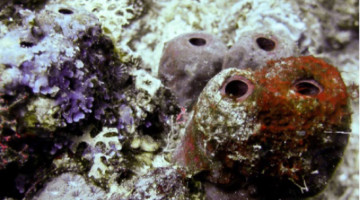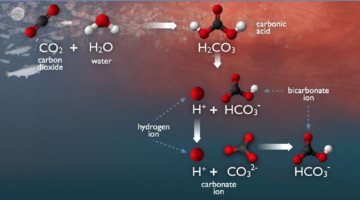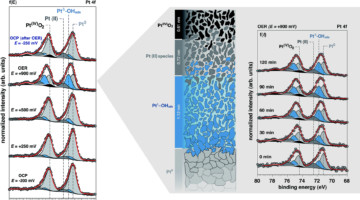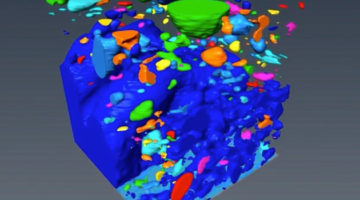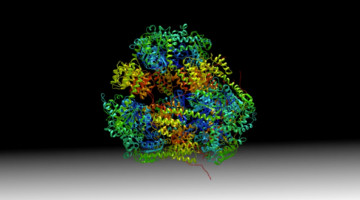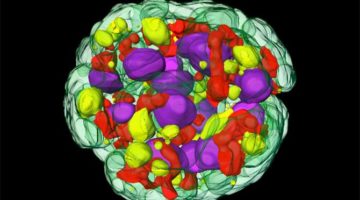To comply with DOE’s Public Access Plan, Berkeley Lab must ensure that open-access versions of publications co-authored by Lab employees are included in DOE’s open-access system. If you co-author work with a Lab scientist, please note that the scientist may ask you for an open-access version of the manuscript. We request that you cooperate with our scientists in a timely fashion and provide manuscripts to satisfy this DOE requirement when asked. Read more »
All News & Updates
2017 ALS User Meeting Award Nominations Due July 14
Nominations for the 2017 ALS User Meeting awards will open soon and are due on July 14. Consider preparing a nomination for a deserving colleague or group of individuals for one of the three awards. In addition to the award plaque, there will be a cash prize associated with each award. Read more »
Bacterial Symbiont Sequesters Arsenic and Barium in Sponges
Researchers used x-ray fluorescence, spectroscopy, and diffraction to study how populations of symbiotic bacteria can act as a detox organ in a host with no organs. The bacteria, members of the species Entotheonella, accumulate and mineralize large quantities of arsenic and barium in sponges. Read more »
APXPS Finds Carbonate Reversal at Liquid Interfaces
Aqueous carbonate systems are central to many processes essential to life, from the blood buffer system to the global carbon cycle. Using APXPS, researchers probed the concentration of carbonates near an interface, finding a surprising reversal in the expected abundances as a function of depth. Read more »![]()
![]()
Monika Blum, Assistant Research Professor and UEC Chair
Moni Blum has been coming to the ALS since she was a young graduate student. She’s now an assistant research professor at UNLV in Clemens Heske’s group and oversees their synchrotron activities at the ALS. The group uses ALS Beamlines 8.3.2 and 9.3.1 to study materials for energy conversion. Blum also serves as chair of the UEC. Read more »
ALS Doctoral Fellowship Applications Due June 30
ALS Doctoral Fellowships allow early-career researchers to spend a year in residence at Berkeley Lab working at the frontier of synchrotron radiation research and helping advance state-of-the-art techniques and applications. Starting in 2017, a new fellowship track has been created to leverage the complementary capabilities of the ALS and Molecular Foundry. Applications are due June 30. Read more »
A Closer Look at a Working Platinum/Electrolyte Interface
Ambient-pressure studies of the interface between a platinum electrode and an alkaline electrolyte revealed the molecular-level chemistry, structure, and dynamics of the platinum surface as a function of applied potential, highlighting differences between thermodynamic predictions and the actual surface composition. Read more »
How X-rays Helped to Solve Mystery of Floating Rocks
Some rocks can float on water for years at a time before eventually sinking. X-ray microtomography studies help explain how by scanning samples of lightweight, glassy, and porous volcanic rocks known as pumice stones. Their surprisingly long-lived buoyancy can help scientists discover underwater volcano eruptions. Read more »
A Hollow Pyramid Unlocks Principles of Protein Architecture
Researchers have designed a hollow, pyramid-shaped protein with a controllable cavity size that could be useful in the capture and release of smaller compounds. The tools and techniques developed could be useful in analyzing and optimizing designed protein assemblies and understanding their behavior in solution. Read more »
Sequencing of Green Alga Genome Provides Blueprint to Advance Clean Energy, Bioproducts
Scientists have sequenced the genome of a green alga that has drawn commercial interest as a strong producer of quality lipids for biofuel production. The chromosome-assembly genome of Chromochloris zofingiensis provides a blueprint for new discoveries in sustainable biofuels, antioxidants, and other valuable bioproducts. Read more »
- « Previous Page
- 1
- …
- 107
- 108
- 109
- 110
- 111
- …
- 139
- Next Page »


